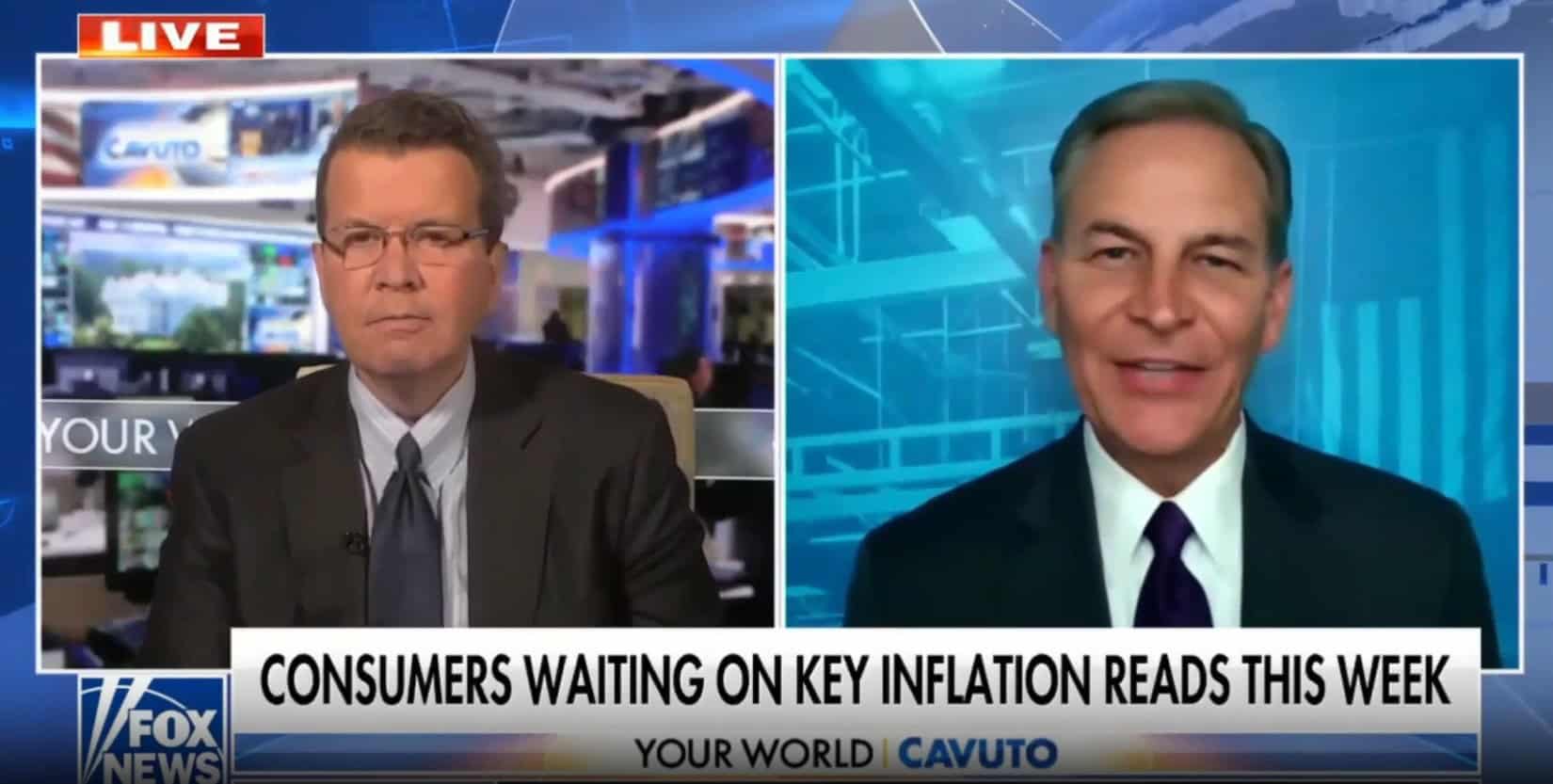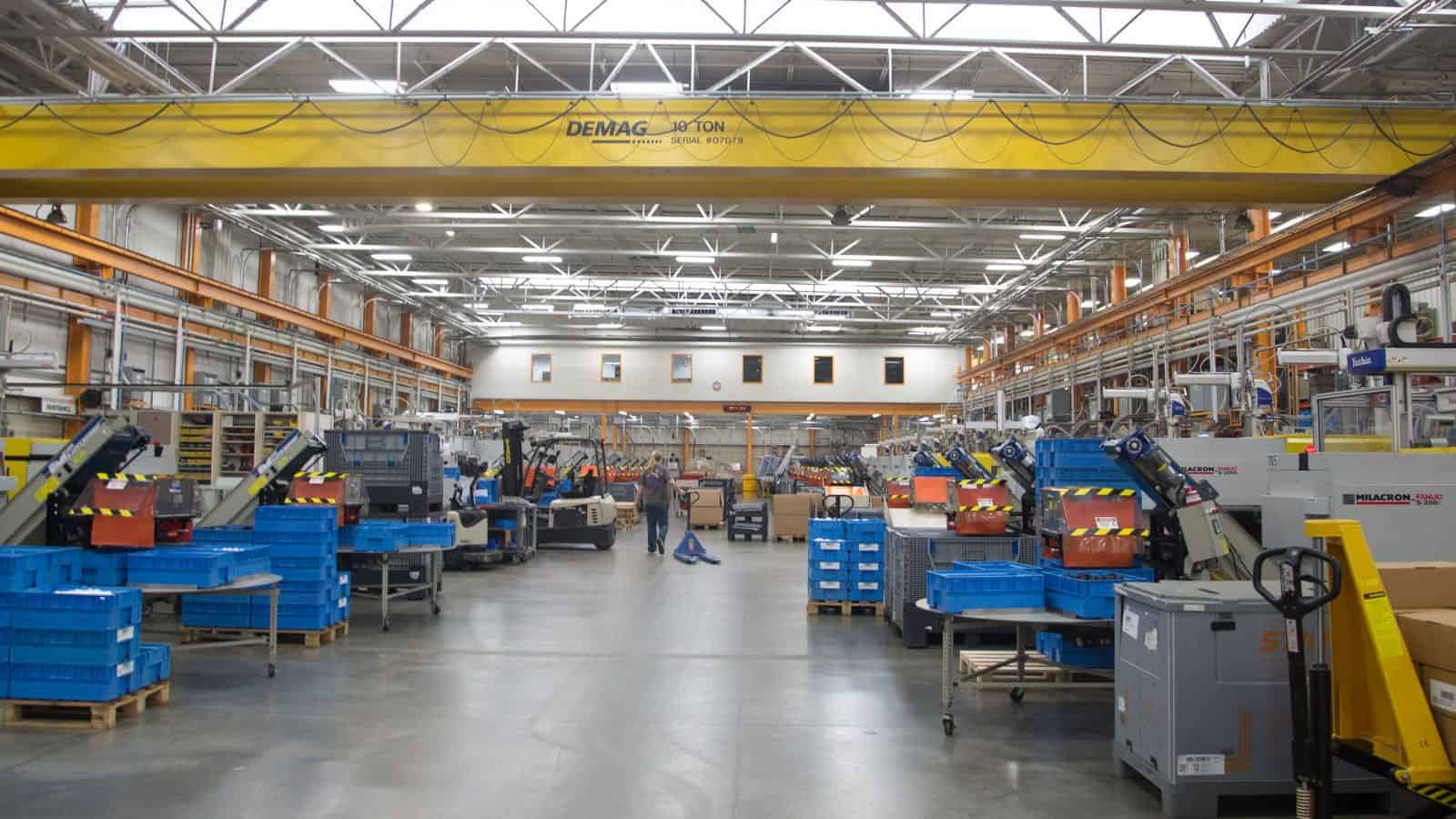NAM Launches Ad Campaign for PBM Reform

The NAM has launched a new wave of ads in D.C. and nine states, extending its seven-figure campaign urging policymakers to reign in pharmacy benefit managers, underregulated middlemen who drive up the costs of prescription medications for manufacturers and manufacturing workers.
A quick refresher: PBMs sit in the middle of the health care industry, negotiating with employer health plans, insurers, biopharmaceutical manufacturers, pharmacies and other players to determine what prescriptions employees can access and what they pay for them. While their job is ostensibly to reduce the costs of medicines, often they do the exact opposite.
- PBMs have been found to steer patients toward pricier options, inflict steep mark-ups and hidden fees and even pocket large portions of the rebates that biopharmaceutical manufacturers intend for American workers and their families.
NAM in action: The NAM has been a staunch voice supporting PBM reform on Capitol Hill, recently laying out manufacturers’ concerns for the House Committee on Oversight and Accountability.
- The committee conducted its third hearing on PBM overreach in July, when it also released a highly critical report on PBMs that echoed many of the NAM’s concerns.
- In addition, the NAM is supporting several key measures to increase oversight of PBMs’ business models and reform their pricing strategies, including the DRUG Act and the PBM transparency provisions in the Lower Costs, More Transparency Act.
What Congress should do: The NAM is advocating for three major reforms to the PBM system, including:
- Increasing transparency in PBMs’ business models, including how their compensation influences health care decisions and how their policies dictate a medicine’s cost and formulary placement;
- Rebate pass-through, which will ensure health care savings are passed directly to manufacturers and their workers rather than being pocketed by PBMs; and
- Delinking PBMs’ compensation from a medicine’s list price, removing their incentive to put upward pressure on list prices to maximize their own profits.
Benefits for all: The NAM is calling on Congress to enact these reforms in the commercial insurance market, not just in government programs like Medicare and Medicaid, so that all Americans can enjoy lower-cost health care benefits.
What to watch: The NAM is calling on Congress to act on this issue during the lame-duck session following the election.
Manufacturers: EPA’s PFAS Reporting Delay Underscores Massive Administrative Burden
Washington, D.C. – Following the Environmental Protection Agency’s decision to delay the deadline for when companies must submit records dating back to 2011 on per- and polyfluoroalkyl substances, otherwise known as PFAS, National Association of Manufacturers Vice President of Domestic Policy Chris Phalen released the following statement:
“We are pleased to see the EPA delay this retroactive reporting requirement—as the NAM has called for—which will temporarily prevent an increase in the regulatory burden facing manufacturers. More broadly, today’s announcement reflects the massive administrative burden this proposal would impose on both the business community and regulators, while failing to provide insights for effective and prioritized public health efforts. We urge the agency to reverse course entirely, unless and until it has the capacity to effectively enforce the standard.”
-NAM-
The National Association of Manufacturers is the largest manufacturing association in the United States, representing small and large manufacturers in every industrial sector and in all 50 states. Manufacturing employs nearly 13 million men and women, contributes $2.87 trillion to the U.S. economy annually and accounts for 53% of private-sector research and development. The NAM is the powerful voice of the manufacturing community and the leading advocate for a policy agenda that helps manufacturers compete in the global economy and create jobs across the United States. For more information about the NAM or to follow us on Twitter and Facebook, please visit www.nam.org.
Timmons: Industry Resilient, but Action Needed

Despite mixed market signals in recent weeks, the U.S. economy is strong and manufacturing is resilient—but Congress must take certain steps to maintain the industry’s competitiveness, NAM President and CEO Jay Timmons told Fox News host Neil Cavuto Monday.
What’s going on: When lawmakers return from their August recess next month, they should prioritize several tax provisions, Timmons said.
- “When … Congress goes back, we’ve got to deal with interest deductibility, and we’ve got to deal with the research-and-development tax deduction,” he continued. “We’ve got to deal with full expensing. Those are things that have expired.” These measures and others are top priorities in the NAM’s tax campaign, Manufacturing Wins.
- Other manufacturing-critical tax provisions are scheduled to expire or be reduced drastically at the end of next year, including the pass-through and estate-tax deductions. What’s more, “candidates on both sides of the aisle … are talking about raising taxes on businesses,” Timmons said. Individual tax rates and tax rates on manufacturers that operate globally are also set to rise at the end of 2025.
Regulatory onslaught: Manufacturers are also struggling with a “regulatory burden that is driving up the cost of doing business,” Timmons told Fox News.
- “We have restrictions on our ability to develop energy sources here, and we have a ban on exports of natural gas. All of those things lead to potential downsides in the economy.”
- The vast majority of Americans support exporting natural gas, a March NAM poll found, but the Biden administration’s indefinite pause on permits to export liquefied natural gas, imposed in January, continues.
Hopeful outlook: “There is a … very positive sense among manufacturers that if we do the right things on the policy front, we’re going to continue [the] expansion in the sector,” Timmons added. “We’re going to continue the record investments that we’ve seen, the record job growth and the record wage growth in the sector.”
NAM: Don’t Rush Proposed Reforms in Mexico

Mexican President Andrés Manuel López Obrador proposed a sweeping package of amendments to Mexico’s constitution back in February. Now, with President-elect Claudia Sheinbaum set to take office in less than two months, manufacturers want to know whether and how the changes will happen.
What’s going on: “Over the last 10 years, manufacturers in the U.S. have dramatically expanded facilities and operations in Mexico, totaling over $25 billion, according to the U.S. Commerce Department,” said NAM Director of International Policy Dylan Clement at the recent Wilson Center event “Mexico’s Judicial Reforms: Perspectives from the Private Sector.”
- “When manufacturers invest, they sink large amounts of capital—literally—into the ground, which is costly to relocate once built,” he continued. “We do not pretend to know how the judicial reform will play out … [but] manufacturers are fearful of the risk associated with enacting sweeping changes to the judicial system in Mexico on such a short timeline.”
- Sheinbaum, who will be Mexico’s first female president, and her Morena party won a landslide election in June.
What’s been proposed: The constitutional amendments set forth include eliminating government oversight and regulatory agencies, including Mexico’s freedom-of-information body, INAI, and its anti-trust agency, COFECE, and requiring all Mexican judges—including Supreme Court judges—to be elected by popular vote, according to the Associated Press and Reuters.
- Several of the amendments appear to violate Mexico’s obligations under the U.S.–Mexico–Canada Agreement.
Why it’s important: Mexico is America’s largest trading partner, and “[a]t the end of the day, manufacturers want to partner with Mexico to help it prosper economically, grow its industrial capacity and enhance its self-sufficiency,” Clement said—but the broad revisions set forth by López Obrador and other worrying developments in Mexico have the potential to damage the critical relationship and undo important recent gains.
- The proposed changes to Mexico’s judicial system could erode the checks and balances within Mexico’s government, politicize judicial outcomes, undermine the rule of law and result in higher levels of corruption throughout Mexico.
- For investors, these challenges would be compounded by the USMCA’s weakened investor state dispute-settlement mechanism, which requires foreign investors to go through Mexico’s domestic court system before seeking a neutral arbitration panel via the USMCA.
In sum, the constitutional amendments carry the risk of greatly complicating the upcoming review of the USMCA, which the U.S., Canada and Mexico will conduct in 2026.
- Ultimately, any erosion of the business climate in Mexico will harm the attractiveness of Mexico as a destination for manufacturers seeking to “near-shore” their supply chains closer to the U.S.
What should be done: “For these reasons, the NAM would caution against rushing the judicial reform through in September, given that it will have an impact on Mexico’s investment climate for decades to come and many questions about it remain unanswered,” Clement concluded. “It is better to get this right than done quickly.”
Energy Permitting Reform Act Will Help Unlock the Full Potential of Manufacturing Industry, Is Critical for Competing with China

Washington, D.C. – Following the bipartisan passage of the Energy Permitting Reform Act of 2024 markup in the Senate Energy and Natural Resources Committee, National Association of Manufacturers President and CEO Jay Timmons released the following statement:
“Manufacturers have been calling attention to the consequences of America’s broken permitting process for years, while building a case for reform. Both sides of the aisle now realize that these critical updates will enable Congress to achieve its broader energy goals and the development of:
- Renewable energy projects;
- Pipelines for traditional energy, hydrogen and carbon capture storage;
- Critical mineral mines and processing facilities;
- Semiconductor and battery manufacturing fabs;
- Interstate transmission lines; and
- Hydroelectric and nuclear power plants.
“These developments are absolutely critical for us to be able to compete with China. As this legislation progresses, many of the commonsense policies outlined in the Energy Permitting Reform Act will help unlock the full potential of our industry, bolster our nation’s energy security and create American jobs. Streamlining permitting processes, cutting red tape, requiring that federal agencies make timely decisions and reducing the potential for baseless litigation will help prevent years-long delays for manufacturers—delays that give other countries a distinct advantage and put our own security at risk. America should never be content with a system that can take 10 or 15 years to approve urgently needed projects, when approval can take a fifth of that time in other countries that still adhere to high standards.
“We thank Chairman Manchin and Ranking Member Barrasso for introducing this legislation and look forward to working with lawmakers to advance it.”
-NAM-
The National Association of Manufacturers is the largest manufacturing association in the United States, representing small and large manufacturers in every industrial sector and in all 50 states. Manufacturing employs nearly 13 million men and women, contributes $2.89 trillion to the U.S. economy annually and accounts for 53% of private-sector research and development. The NAM is the powerful voice of the manufacturing community and the leading advocate for a policy agenda that helps manufacturers compete in the global economy and create jobs across the United States. For more information about the NAM or to follow us on Twitter and Facebook, please visit www.nam.org.
NAM Calls for Oversight on the CPSC

Manufacturers have long been partners of the Consumer Product Safety Commission—working with the agency to keep the public informed and protected—but a lack of transparency at the CPSC in the past few years has stymied businesses’ attempts “to understand how [they] will be regulated,” the NAM told the House Energy and Commerce Subcommittee on Innovation, Data and Commerce ahead of a hearing Tuesday.
What’s going on: The NAM has regularly called for congressional oversight of the CPSC in recent years. Ahead of the “Fiscal Year 2025 Consumer Product Safety Commission Budget” subcommittee hearing, the NAM highlighted several areas of concern for legislators to address:
- Section 6(b) of the Consumer Product Safety Act: “Manufacturers strongly support maintaining the crucial, balanced and effective information disclosure procedures currently mandated in the Consumer Product Safety Act,” said NAM Vice President of Domestic Policy Charles Crain. “Unfortunately, in recent years, the CPSC has attempted to circumvent these standards, releasing statements that lack any scientific data or research or by taking actions without official agency rulemaking.”
- Effective communication of rulemaking and research with regulated businesses: Despite a CPSA requirement that the agency defer to voluntary standards in certain safety-measure compliance cases, “there are recent examples of the agency commencing a proposed rulemaking in an apparent rush to regulate.” The agency has also begun unnecessarily withholding from manufacturers the test reports and analysis they need to create voluntary standards, while giving manufacturers “reduced time … to implement proposed and final rules.”
- Public engagement by CPSC commissioners and staff: “One of the benefits of a small federal agency with multiple commissioners is the availability of commissioners and senior staff to meet with interested parties on relevant topics,” Crain continued. “Unfortunately, in recent years, the CPSC has been less willing to engage in productive conversations with regulated entities.”
The last word: “It is critical that the CPSC effectively communicate and work with manufacturers to ensure that our shared goal of consumer safety is maintained,” said Crain. “The NAM will continue engaging with both the CPSC and Congress to see that the agency is effectively engaging with the manufacturing community.”
NAM Legal Center Talks Chevron

The Supreme Court’s ruling in the closely watched Loper Bright Enterprises v. Raimondo is a watershed decision for administrative law with significant implications for the business community. The NAM Legal Center provided us with an overview.
What’s going on: Late last month, the Supreme Court overturned the “Chevron doctrine,” which since 1984 had required federal courts to defer to an administrative agency’s interpretation of an ambiguous statute—so long as the interpretation was reasonable.
What it means: The end of the doctrine means less power for federal agencies, potentially fewer regulations and a guaranteed surge in regulatory litigation, according to the Legal Center.
- When Congress leaves ambiguities or gaps in statutes, agencies can no longer exploit those gaps to enact overreaching rules or regulations (read the NAM’s statement on the decision here).
- Although Chevron had not been cited by the Supreme Court since 2016, it is the basis for 70 Supreme Court opinions and approximately 17,000 lower court decisions. Those holdings remain intact for now but could be challenged anew by litigants under the new standard.
The majority opinion: Writing for the majority, Chief Justice John Roberts relied on a plain-text reading of the Administrative Procedure Act, which directs courts—not agencies—“to decide all questions of law.”
- “The APA, in short, incorporates the traditional understanding of the judicial function, under which courts must exercise independent judgment in determining the meaning of statutory provisions,” he wrote.
- Absent an explicit delegation by Congress, agency interpretations can guide or inform courts, but in keeping with the APA, they cannot be given binding deference. According to the court, all statutes “have a single, best meaning,” and “courts use every tool at their disposal to determine the best reading of the statute and resolve the ambiguity.”
The dissent: Writing for the liberal justices in dissent, Justice Elena Kagan expressed concerns with overturning this “cornerstone” of regulatory law by shifting interpretative authority from “expert, experienced and politically accountable agenc[ies]” to courts that have “no special competence.”
In sum: The decision will result in a broad reduction in the power of executive branch agencies, with that power shifting to federal courts.
- Thus, regardless of the party in power or its pro- or anti-regulatory leaning, much less regulatory discretion will be afforded to the agencies.
The NAM predicts: Looking forward, the NAM sees Congress and regulators turning to industry for input as policies are adopted and statutes are interpreted, giving manufacturers an opportunity to play a more significant role in shaping outcomes.
What we’re doing: The NAM Legal Center is currently leading regulatory challenges against the Environmental Protection Agency, the Occupational Safety and Health Administration and the Securities and Exchange Commission. It will continue to push back on overreaching agency actions that threaten manufacturing competitiveness—now on a more even playing field.
Supreme Court Decision is Game-Changing Transformation for Legal and Regulatory Landscape for Manufacturers
Washington, D.C. – Today, the United States Supreme Court overruled the Chevron doctrine—a requirement that federal courts defer to an administrative agency’s interpretation of an ambiguous statute—that had proven unworkable and incoherent.
“The legal and regulatory landscape has transformed in the blink of an eye. Manufacturers will not waste a moment in seizing this opportunity—an opportunity that we have never seen before—to leverage this decision to rein in the regulations that are holding back manufacturers from improving lives,” said National Association of Manufacturers President and CEO Jay Timmons. “The NAM Legal Center and our best-in-class advocacy team will be on the field, leveraging this decision and the new tools it gives us, to fight back new regulations we are facing today as well as whatever may come our way in the next administration. For anyone who wants to see manufacturing grow and succeed in America, today heralds the possibility for a much brighter future.”
“Today’s ruling is a game changer for manufacturers as Chevron was at least partly to blame for the unpredictability and overreach that have become synonymous with the modern regulatory state,” said NAM Chief Legal Officer Linda Kelly. “We are hopeful that this marks the end of an overbearing regulatory system that had become complex, and compliance in many cases that was contradictory from agency to agency. For the past 40 years, Chevron has tipped the scales in favor of unelected officials and against the regulated public. Now the onus is on Congress to provide clear guardrails and guidelines in its intent to ensure that laws are implemented in a manner that achieves their goal. Manufacturers are eager to work with lawmakers to develop policies that promote innovation, job creation, economic growth and improved quality of life for all Americans.”
“Manufacturers have been the subject of a regulatory onslaught, with agencies’ far-reaching decisions affecting companies of all sizes,” said NAM Managing Vice President of Policy Chris Netram. “The EPA, SEC and DOL—the aggressive nature of rulemaking and enforcement actions that exceed authority come from the alphabet soup of regulators. The NAM has been successful in fighting key rules in court, and today’s decision gives us the ability to challenge even more actions while ensuring future agency actions do not exceed the authority mandated by Congress.”
-NAM-
The National Association of Manufacturers is the largest manufacturing association in the United States, representing small and large manufacturers in every industrial sector and in all 50 states. Manufacturing employs nearly 13 million men and women, contributes $2.89 trillion to the U.S. economy annually and accounts for 53% of private-sector research and development. The NAM is the powerful voice of the manufacturing community and the leading advocate for a policy agenda that helps manufacturers compete in the global economy and create jobs across the United States. For more information about the NAM or to follow us on Twitter and Facebook, please visit www.nam.org.
NAM to Tax Teams: Preserve Tax Provisions Before They Expire

Raising taxes on manufacturers would damage the industry and the U.S. economy as a whole, the NAM told the House Ways and Means Committee this week. That’s why it’s crucial that Congress preserve set-to-expire tax reform provisions.
What’s going on: In a continuation of its Manufacturing Wins campaign, the NAM conveyed a clear message to six of the committee’s specialized “Tax Teams”: act now to protect manufacturers from tax increases.
Why it’s important: Failure to act before the end of next year, when key provisions from 2017 tax reform are set to expire, would result in higher taxes on virtually all manufacturers—which “will cost millions of jobs and put the American manufacturing sector at a severe disadvantage globally,” the NAM wrote.
What’s at stake: The NAM highlighted manufacturers’ top tax priorities for the Tax Teams, discussing why preserving pro-growth tax policy is vital for manufacturers in the United States:
- In communication with the Main Street Tax Team, the NAM called on Congress to preserve tax reform’s reduced individual income tax rates and maintain the 20% pass-through deduction. It emphasized for the Supply Chain Tax Team the importance of tax reform’s reduction in the corporate tax rate, which brought the U.S. from one of the highest rates in the world to a globally competitive 21%. The Global Competitiveness Tax Team received a similar message.
- The NAM detailed for the Rural America Tax Team the damage the estate tax imposes on family-owned manufacturers, and why Congress should not allow more family-owned businesses’ assets to be subject to the estate tax at the end of 2025.
- The NAM continued to push for pro-growth, pro-innovation R&D tax incentives with the U.S. Innovation Tax Team, and it enumerated for the Manufacturing Tax Team the full range of policies that will impact manufacturers at the end of 2025—and called for urgent congressional action to protect manufacturers from tax hikes.
The final word: “Manufacturers of all sizes, throughout the supply chain, are calling on Congress to preserve tax reform in its entirety,” said NAM Vice President of Domestic Policy Charles Crain. “Manufacturers and manufacturing families simply cannot afford the devastating tax increases scheduled for the end of 2025 if Congress fails to act.”
Manufacturers Score Victory on Proxy Firms

The NAM achieved a significant victory in court Wednesday in a case that sought to bring needed oversight to proxy advisory firms—and, more broadly, to ensure regulatory certainty for manufacturers.
The background: Proxy firms make recommendations regarding the way shareholders should vote on proxy ballot proposals that come before public companies.
- These firms operate with minimal oversight despite their outsized influence and even though their decisions can have significant and sometimes harmful impacts.
The fight: In 2020, the Securities and Exchange Commission finalized an NAM-backed rule that included a range of modest but critical reforms to proxy firms’ business models.
- In particular, the 2020 rule ensured that companies had more information about the firms’ voting recommendations and provided investors with companies’ responses to those recommendations.
- But in 2022, the SEC rescinded critical portions of that rule.
- The NAM sued the SEC, asking the U.S. Court of Appeals for the Fifth Circuit to strike down this arbitrary and capricious agency action.
The victory: This week—in news covered by Reuters, POLITICO Pro (subscription), Law360 (subscription), Pensions & Investments (subscription) and Bloomberg (subscription)—the Fifth Circuit ruled in the NAM’s favor, deciding that the SEC acted unlawfully in rescinding the 2020 rule. In particular, the court made two critical points:
- The court held that the SEC’s stated justification for its decisions to rescind NAM-supported proxy firm reforms didn’t pass muster and called the agency’s reasoning “facially irrational” and not “reasonable [or] reasonably explained.”
- The court also ruled that a government agency reversing course despite no change in its underlying factual findings must “explain its about-face” by “giv[ing] a more detailed explanation” than the SEC provided.
- This ruling builds on existing case law that prevents agencies from arbitrarily reversing policies after administrations change, thus encouraging regulatory certainty for manufacturers.
Our take: “This decision confirms that federal agencies are bound by the rule of law, even as administrations change,” said NAM Chief Legal Officer Linda Kelly.
- “Manufacturers depend on the SEC to be a steady regulatory hand at the wheel of America’s world-leading capital markets—an obligation the agency abandoned in rescinding the commonsense, compromise 2020 proxy advisory firm rule. … We will continue to fight in court to uphold the 2020 rule—and to work with the SEC and with Congress to ensure appropriate oversight of these powerful actors.”
